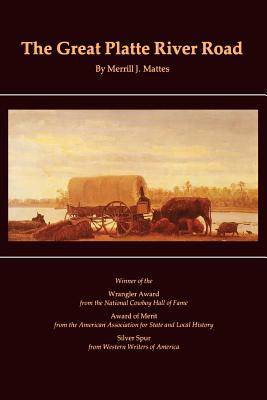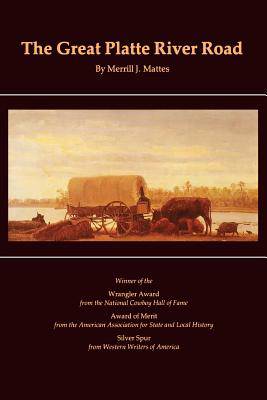
- Afhalen na 1 uur in een winkel met voorraad
- Gratis thuislevering in België vanaf € 30
- Ruim aanbod met 7 miljoen producten
- Afhalen na 1 uur in een winkel met voorraad
- Gratis thuislevering in België vanaf € 30
- Ruim aanbod met 7 miljoen producten
Zoeken
The Great Platte River Road
The Covered Wagon Mainline via Fort Kearny to Fort Laramie
Merrill J Mattes
€ 41,95
+ 83 punten
Omschrijving
The Great Platte River Road through Nebraska and Wyoming was the grand corridor of America's westward expansion. A number of famous trails converged in the broad valley of the Platte, forming a kind of primitive superhighway for the great covered wagon migration from 1841 to 1866. From jumping-off places along the Missouri River--notably the Omaha-Council Bluffs, St. Joseph, and Kansas City areas--the emigrant throngs came together at Fort Kearny, Nebraska. Although they continued on to South Pass, Wyoming, and beyond, this book focuses on the feeder mutes and the more than three hundred miles between Fort Kearny and Fort Laramie.
The Great Platte River Road looks at border towns, trail routes, river crossings, stage stations, military posts, and such landmarks as Chimney Rock and Scott's Bluff. It goes far beyond geography and Indian encounters in revealing cultural aspects of the great migration: food, dress, equipment, organization, camping, traffic patterns, sex ratios, morals, manners, religion, crime, accidents, disease, death, and burial customs.
Specificaties
Betrokkenen
- Auteur(s):
- Uitgeverij:
Inhoud
- Aantal bladzijden:
- 600
- Taal:
- Engels
- Reeks:
Eigenschappen
- Productcode (EAN):
- 9780803281530
- Verschijningsdatum:
- 1/11/1987
- Uitvoering:
- Paperback
- Formaat:
- Trade paperback (VS)
- Afmetingen:
- 152 mm x 229 mm
- Gewicht:
- 879 g

Alleen bij Standaard Boekhandel
+ 83 punten op je klantenkaart van Standaard Boekhandel
Beoordelingen
We publiceren alleen reviews die voldoen aan de voorwaarden voor reviews. Bekijk onze voorwaarden voor reviews.








